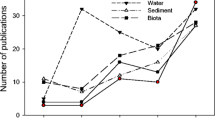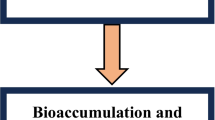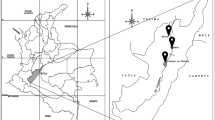Abstract
Microplastic particles (MP) contaminate oceans and affect marine organisms in several ways. Ingestion combined with food intake is generally reported. However, data interpretation often is circumvented by the difficulty to separate MP from bulk samples. Visual examination often is used as one or the only step to sort these particles. However, color, size, and shape are insufficient and often unreliable criteria. We present an extraction method based on hypochlorite digestion and isolation of MP from the membrane by sonication. The protocol is especially well adapted to a subsequent analysis by Raman spectroscopy. The method avoids fluorescence problems, allowing better identification of anthropogenic particles (AP) from stomach contents of fish by Raman spectroscopy. It was developed with commercial samples of microplastics and cotton along with stomach contents from three different Clupeiformes fishes: Clupea harengus, Sardina pilchardus, and Engraulis encrasicolus. The optimized digestion and isolation protocol showed no visible impact on microplastics and cotton particles while the Raman spectroscopic spectrum allowed the precise identification of microplastics and textile fibers. Thirty-five particles were isolated from nine fish stomach contents. Raman analysis has confirmed 11 microplastics and 13 fibers mainly made of cellulose or lignin. Some particles were not completely identified but contained artificial dyes. The novel approach developed in this manuscript should help to assess the presence, quantity, and composition of AP in planktivorous fish stomachs.






Similar content being viewed by others
References
Arthur C, Baker J and Bamford H (2009) In: Proceedings of the international research workshop on the occurrence, effects and fate of microplastic marine debris. NOAA Technical Memorandum NOS-OR&R-30, 9–11 Sept 2008
Barnes DKA, Galgani F, Thompson RC, Barlaz M (2009) Accumulation and fragmentation of plastic debris in global environments. Philos Trans R Soc Lond B Biol Sci 364:1985–1998. doi:10.1098/rstb.2008.0205
Besseling E, Foekema EM, Van Franeker JA et al (2015) Microplastic in a macro filter feeder: humpback whale Megaptera novaeangliae. Mar Pollut Bull. doi:10.1016/j.marpolbul.2015.04.007
Boerger CM, Lattin GL, Moore SL, Moore CJ (2010) Plastic ingestion by planktivorous fishes in the North Pacific Central Gyre. Mar Pollut Bull 60:2275–2278. doi:10.1016/j.marpolbul.2010.08.007
Carpenter EJ, Smith KL Jr (1972) Plastics on the Sargasso sea surface. Science 175:1240–1241
Cheshire A, Adler E, Barbiere J et al (2009) UNEP/IOC Guidelines on Survey and Monitoring of Marine Litter, UNEP regional seas reports and studies. Vol. IOC Technical Series No. 83
Cho LL (2007) Identification of textile fiber by Raman microspectroscopy. Forensic Sci J 6:55–62
Choy C, Drazen J (2013) Plastic for dinner? Observations of frequent debris ingestion by pelagic predatory fishes from the central North Pacific. Mar Ecol Prog Ser 485:155–163. doi:10.3354/meps10342
Christensen CE, McNeal SF, Eleazer P (2008) Effect of lowering the pH of sodium hypochlorite on dissolving tissue in vitro. J Endod 34:449–452. doi:10.1016/j.joen.2008.01.001
Claessens M, Van Cauwenberghe L, Vandegehuchte MB, Janssen CR (2013) New techniques for the detection of microplastics in sediments and field collected organisms. Mar Pollut Bull 70:227–233
Cole M, Lindeque P, Halsband C, Galloway TS (2011) Microplastics as contaminants in the marine environment: a review. Mar Pollut Bull 62:2588–2597
Cole M, Webb H, Lindeque PK et al (2014) Isolation of microplastics in biota-rich seawater samples and marine organisms. Sci Rep 4:4528. doi:10.1038/srep04528
Cózar A, Echevarría F, González-Gordillo JI et al (2014) Plastic debris in the open ocean. Proc Natl Acad Sci USA 111:10239–10244. doi:10.1073/pnas.1314705111
Cunha ME, Garrido S, Pissarra J (2005) The use of stomach fullness and colour indices to assess Sardina pilchardus feeding. J Mar Biol Assoc UK 85:425–431. doi:10.1017/S0025315405011367h
Davison P, Asch RG (2011) Plastic ingestion by mesopelagic fishes in the North Pacific Subtropical Gyre. Mar Ecol Prog Ser 432:173–180
Derraik JG (2002) The pollution of the marine environment by plastic debris: a review. Mar Pollut Bull 44:842–852. doi:10.1016/S0025-326X(02)00220-5
Dixon TJ, Dixon TR (1983) Marine litter distribution and composition in the North Sea. Mar Pollut Bull 14:145–148. doi:10.1016/0025-326X(83)90068-1
Eriksen M, Lebreton LCM, Carson HS et al (2014) Plastic pollution in the world’s oceans: more than 5 trillion plastic pieces weighing over 250,000 tons afloat at sea. PLoS ONE 9:e111913. doi:10.1371/journal.pone.0111913
Evjemo JO, Reitan KI, Olsen Y (2003) Copepods as live food organisms in the larval rearing of halibut larvae (Hippoglossus hippoglossus L.) with special emphasis on the nutritional value. Aquaculture 227:191–210. doi:10.1016/S0044-8486(03)00503-9
Foekema EM, De Gruijter C, Mergia MT et al (2013) Plastic in north sea fish. Environ Sci Technol 47:8818–8824. doi:10.1021/es400931b
Hidalgo-Ruz V, Gutow L, Thompson RC, Thiel M (2012) Microplastics in the marine environment: a review of the methods used for identification and quantification. Environ Sci Technol 46:3060–3075
Horsman PV (1982) The amount of garbage pollution from merchant ships. Mar Pollut Bull 13:167–169. doi:10.1016/0025-326X(82)90088-1
Howell EA, Bograd SJ, Morishige C et al (2012) On North Pacific circulation and associated marine debris concentration. Mar Pollut Bull 65:16–22
Ivar do Sul JA, Costa MF (2014) The present and future of microplastic pollution in the marine environment. Environ Pollut 185:352–364. doi:10.1016/j.envpol.2013.10.036
Ivar do Sul JA, Spengler A, Costa MF (2009) Here, there and everywhere. Small plastic fragments and pellets on beaches of Fernando de Noronha (Equatorial Western Atlantic). Mar Pollut Bull 58:1236–1238. doi:10.1016/j.marpolbul.2009.05.004
Law KL, Thompson RC (2014) Oceans. Microplastics in the seas. Science 345:144–145. doi:10.1126/science.1254065
Law KL, Morét-Ferguson S, Maximenko NA et al (2010) Plastic accumulation in the North Atlantic subtropical gyre. Science 329:1185–1188. doi:10.1126/science.1192321
Lepot L (2011) Application de la spectroscopie Raman à l’analyse de colorants sur fibres de coton dans le contexte de la criminalistique. Dissertation, University of Liege, Belgium
Lobelle D, Cunliffe M (2011) Early microbial biofilm formation on marine plastic debris. Mar Pollut Bull 62:197–200. doi:10.1016/j.marpolbul.2010.10.013
Lusher AL, McHugh M, Thompson RC (2013) Occurrence of microplastics in the gastrointestinal tract of pelagic and demersal fish from the English Channel. Mar Pollut Bull 67:94–99
Merrell TR (1980) Accumulation of plastic litter on beaches of Amchitka Island, Alaska. Mar Environ Res 3:171–184. doi:10.1016/0141-1136(80)90025-2
Möllmann C, Kornilovs G, Fetter M, Köster FW (2004) Feeding ecology of central Baltic Sea herring and sprat. J Fish Biol 65:1563–1581. doi:10.1111/j.1095-8649.2004.00566.x
Moore C, Moore S, Leecaster M, Weisberg S (2001) A comparison of plastic and plankton in the North Pacific Central Gyre. Mar Pollut Bull 42:1297–1300. doi:10.1016/S0025-326X(01)00114-X
Morton WE, Hearle JWS (2008) Physical properties of textile fibres, 4th edn. Elsevier Ltd., Amsterdam
Murray F, Cowie PR (2011) Plastic contamination in the decapod crustacean Nephrops norvegicus (Linnaeus, 1758). Mar Pollut Bull 62:1207–1217
Ohman MD (1997) On the determination of zooplankton lipid content and the occurrence of gelatinous copepods. J Plankton Res 19:1235–1250
OSPAR (2007) OSPAR Pilot project on monitoring marine beach litter. Monit Mar Litter OSPAR Reg. p 74
Plastics Europe (2015) Plastics—the Facts 2014/2015: an analysis of European plastics production, demand and waste data. http://www.plasticseurope.org/Document/plastics-the-facts-20142015.aspx?Page=DOCUMENT&FolID=2. Accessed 29 June 2015
PlasticsEurope (2013) Plastics—the Facts 2013: an analysis of European latest plastics production, demand and waste data. http://www.plasticseurope.org/Document/plastics-the-facts-2013.aspx?Page=DOCUMENT&FolID=2. Accessed 29 June 2015
Plounevez S, Champalbert G (1999) Feeding behaviour and trophic environment of Engraulis encrasicolus (L.) in the Bay of Biscay. Estuar Coast Shelf Sci 49:177–191. doi:10.1006/ecss.1999.0497
Possatto FE, Barletta M, Costa MF et al (2011) Plastic debris ingestion by marine catfish: an unexpected fisheries impact. Mar Pollut Bull 62:1098–1102. doi:10.1016/j.marpolbul.2011.01.036
Pruter AT (1987) Sources, quantities and distribution of persistent plastics in the marine environment. Mar Pollut Bull 18:305–310. doi:10.1016/S0025-326X(87)80016-4
Ryan PG, Moloney CL (1993) Marine litter keeps increasing. Nature 361:23
Spickett CM, Jerlich A, Panasenko OM et al (2000) The reactions of hypochlorous acid, the reactive oxygen species produced by myeloperoxidase, with lipids. Acta Biochim Pol 47:889–899
Stojicic S, Zivkovic S, Qian W et al (2010) Tissue dissolution by sodium hypochlorite: effect of concentration, temperature, agitation, and surfactant. J Endod 36:1558–1562
Thompson R (2006) Plastic debris in the marine environment: consequences and solutions. In: Krause J, Von Nordheim H, Brager S (eds) Marine Nature Conservation in Europe. Bundesamt fur Naturschutz, Stralsund, pp 107–116
Thompson RC, Olsen Y, Mitchell RP et al (2004) Lost at sea: where is all the plastic? Science 304:838. doi:10.1126/science.1094559
Van Cauwenberghe L, Janssen CR (2014) Microplastics in bivalves cultured for human consumption. Environ Pollut 193:65–70. doi:10.1016/j.envpol.2014.06.010
Van der Lingen CD, Bertrand A, Bode A et al (2009) Trophic dynamics of small pelagic fish. In: Checkley D, Roy C, Alheit J, Oozeki Y (eds) Climate change and small pelagic fish. Cambridge University Press, Cambridge, pp 112–157
Woodall LC, Sanchez-Vidal A, Paterson GLJ et al (2014) The deep sea is a major sink for microplastic debris. R Soc Open Sci 1:140317. doi:10.1098/rsos.140317
Wright SL, Thompson RC, Galloway TS (2013) The physical impacts of microplastics on marine organisms: a review. Environ Pollut 178:483–492
Acknowledgments
The authors thank the Institut Français de Recherche pour l’Exploitation de la Mer (IFREMER), the Thalassa and Europe skippers, Yves Verin and Jean-Louis Bigot, and their scientist teams. This study was funded by the Fonds de la Recherche Scientifique (F.R.S.-FNRS). F. Collard acknowledges a PhD Fund for Research Training in Industry and in Agriculture (F.R.I.A.) grant. K. Das is a F.R.S-FNRS Research Associate. This paper is MARE publication nr. 290.
Author information
Authors and Affiliations
Corresponding author
Electronic Supplementary Material
Below is the link to the electronic supplementary material.
Rights and permissions
About this article
Cite this article
Collard, F., Gilbert, B., Eppe, G. et al. Detection of Anthropogenic Particles in Fish Stomachs: An Isolation Method Adapted to Identification by Raman Spectroscopy. Arch Environ Contam Toxicol 69, 331–339 (2015). https://doi.org/10.1007/s00244-015-0221-0
Received:
Accepted:
Published:
Issue Date:
DOI: https://doi.org/10.1007/s00244-015-0221-0




